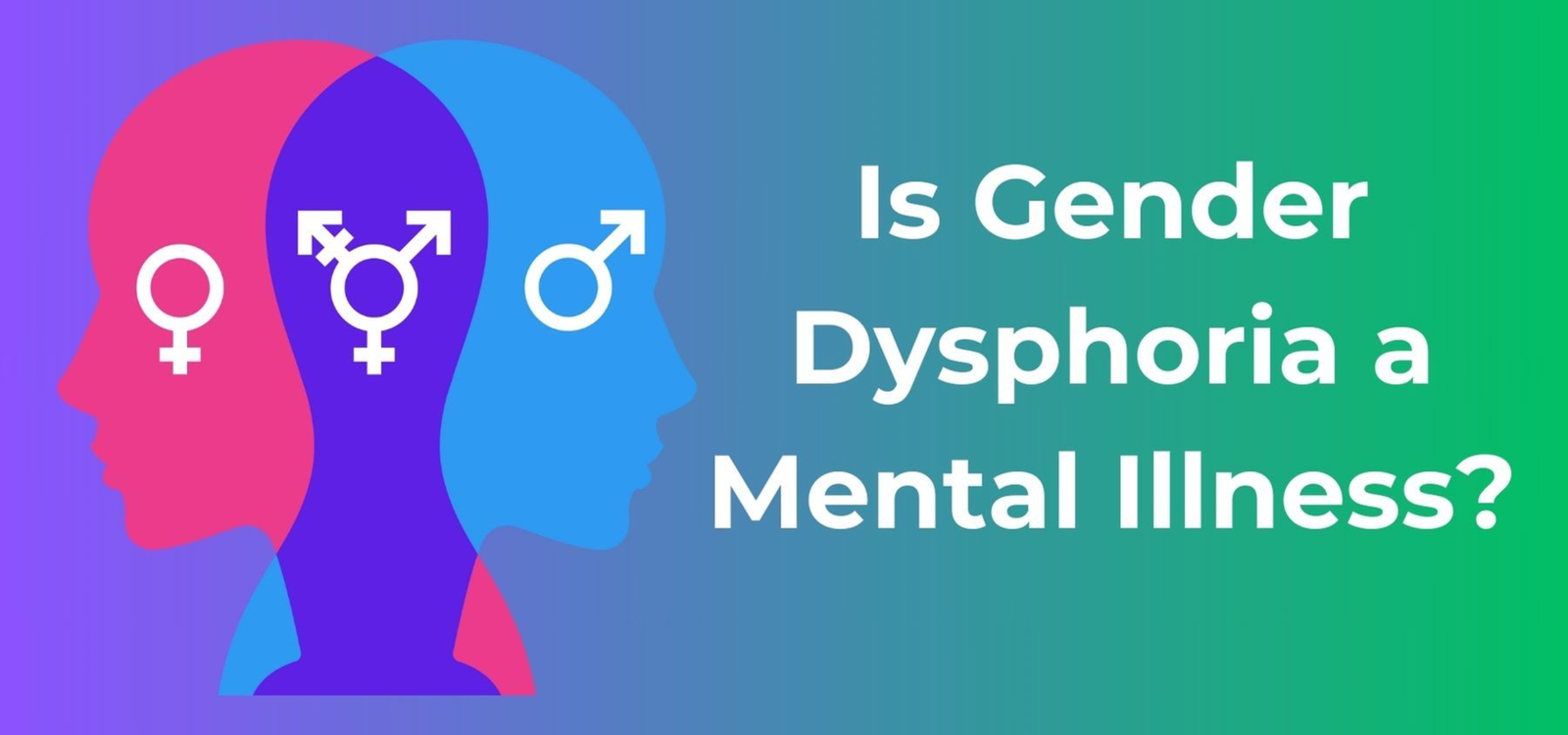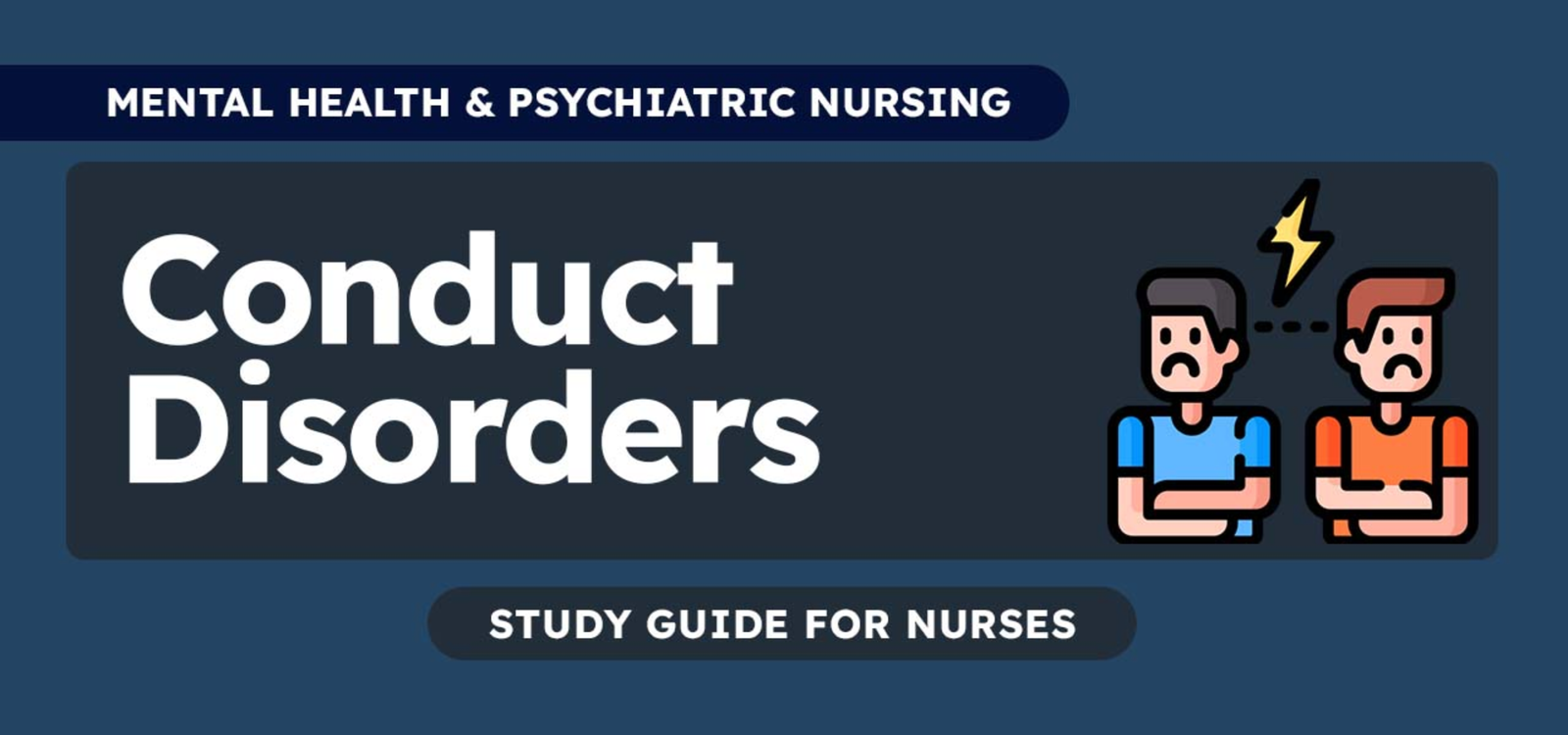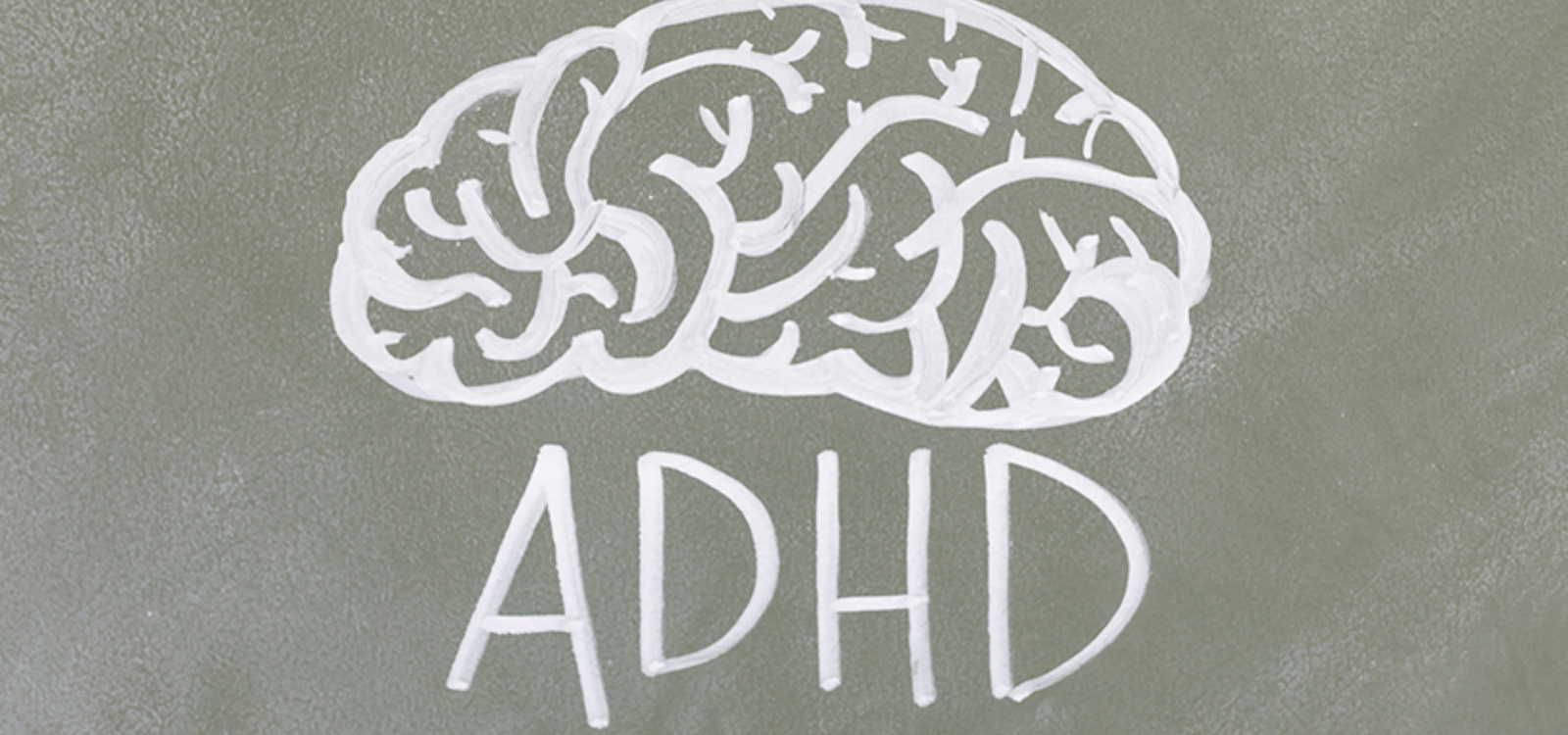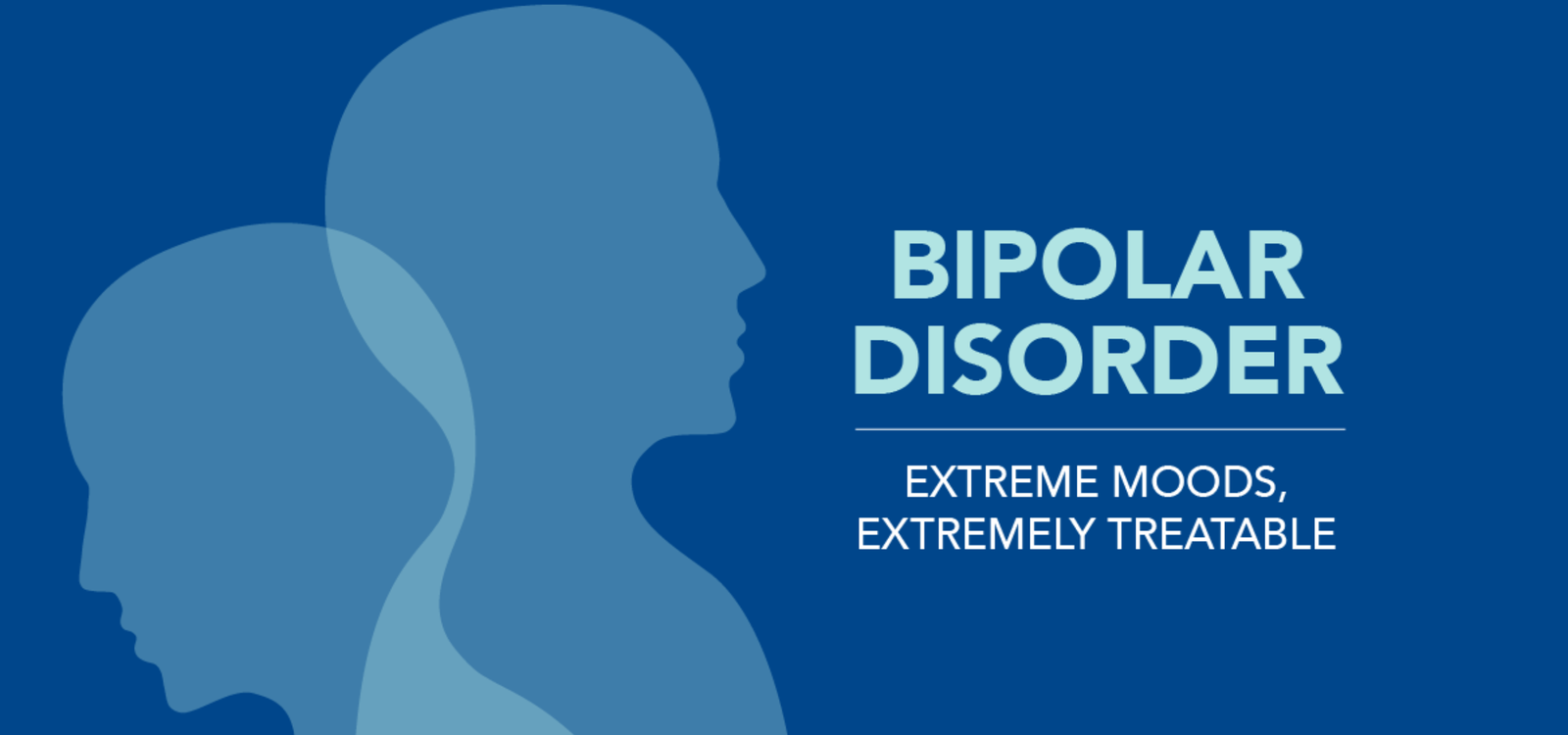
Understanding Sexual Orientation and Factors for a Healthy Sex Life
Please click the below to get the sexual orientation questionaire.
https://drive.google.com/file/d/1WlJP4G8spnUH828JZFarX0-SCT-DPRa3/view?usp=sharing
Sexual orientation refers to an individual’s enduring pattern of emotional, romantic, and/or sexual attractions to men, women, both genders, or none. It is an intrinsic aspect of a person’s identity and can be experienced as heterosexual, homosexual, bisexual, or asexual.
It is important to note that sexual orientation is not a choice or something that can be determined by external factors. It is a deeply personal and individual aspect of one’s identity.
When it comes to checking the sexual orientation of a partner, it is crucial to approach the topic with respect, sensitivity, and open communication. It is not appropriate to assume or try to determine someone’s sexual orientation without their consent.
Instead, focus on fostering a safe and supportive environment where both partners can openly discuss their feelings, desires, and experiences. Trust and understanding are key in any relationship, and this extends to discussions about sexual orientation.
A healthy and satisfying sex life is influenced by various factors. While each individual and relationship is unique, here are 20 important factors that can contribute to a fulfilling sexual experience:
- Communication and openness
- Consent and boundaries
- Mutual respect and trust
- Emotional intimacy
- Physical attraction
- Variety and experimentation
- Understanding and empathy
- Shared values and beliefs
- Compatibility
- Sexual compatibility
- Exploration of fantasies
- Foreplay and arousal techniques
- Stress management
- Body positivity
- Self-confidence
- Health and well-being
- Intimacy outside the bedroom
- Continued learning and growth
- Adaptability and flexibility
- Resolving conflicts constructively
Remember, a healthy sex life is not solely determined by sexual orientation but by the mutual satisfaction, understanding, and fulfillment of both partners’ needs and desires.
Learn More
Understanding Sexual Orientation and Factors for a Healthy Sex Life
Sexual orientation refers to an individual’s enduring pattern of emotional, romantic, and/or sexual attractions to men, women, both genders, or none. It is an intrinsic aspect of a person’s identity and can be experienced as heterosexual, homosexual, bisexual, or asexual.
It is important to note that sexual orientation is not a choice or something that can be determined by external factors. It is a deeply personal and individual aspect of one’s identity.
When it comes to checking the sexual orientation of a partner, it is crucial to approach the topic with respect, sensitivity, and open communication. It is not appropriate to assume or try to determine someone’s sexual orientation without their consent.
Instead, focus on fostering a safe and supportive environment where both partners can openly discuss their feelings, desires, and experiences. Trust and understanding are key in any relationship, and this extends to discussions about sexual orientation.
A healthy and satisfying sex life is influenced by various factors. While each individual and relationship is unique, here are 20 important factors that can contribute to a fulfilling sexual experience:
- Communication and openness
- Consent and boundaries
- Mutual respect and trust
- Emotional intimacy
- Physical attraction
- Variety and experimentation
- Understanding and empathy
- Shared values and beliefs
- Compatibility
- Sexual compatibility
- Exploration of fantasies
- Foreplay and arousal techniques
- Stress management
- Body positivity
- Self-confidence
- Health and well-being
- Intimacy outside the bedroom
- Continued learning and growth
- Adaptability and flexibility
- Resolving conflicts constructively
Remember, a healthy sex life is not solely determined by sexual orientation but by the mutual satisfaction, understanding, and fulfillment of both partners’ needs and desires.
Learn More
Understanding Gender Dysphoria Spectrum: A Guide to DSM-5-TR
Introduction
The Diagnostic and Statistical Manual of Mental Disorders, Fifth Edition, Text Revision (DSM-5-TR) is a comprehensive guide used by mental health professionals for diagnosing and classifying mental disorders. One of the conditions addressed in the DSM-5-TR is Gender Dysphoria Spectrum, which refers to a range of experiences related to gender identity.
Definition of Gender Dysphoria Spectrum as per DSM-5-TR
Gender Dysphoria Spectrum, as defined by the DSM-5-TR, encompasses a variety of experiences where individuals may feel a disconnect between their assigned gender at birth and their gender identity. It includes individuals who may identify as transgender, non-binary, or gender nonconforming.
Symptoms of Gender Dysphoria Spectrum as per DSM-5-TR
The DSM-5-TR outlines several common symptoms that may be present in individuals experiencing Gender Dysphoria Spectrum. These symptoms may include:
- Strong and persistent feelings of discomfort or distress related to one’s assigned gender
- A desire to be recognized and treated as a different gender
- A preference for clothing, activities, or roles typically associated with the opposite gender
- A strong desire to alter one’s physical appearance to align with their gender identity
- Significant distress or impairment in social, occupational, or other important areas of functioning
Diagnostic Classification of Gender Dysphoria Spectrum as per DSM-5-TR
The DSM-5-TR provides a diagnostic classification for Gender Dysphoria Spectrum. It recognizes that individuals may fall into different subcategories based on their age and development. These subcategories include:
- Gender Dysphoria in Children
- Gender Dysphoria in Adolescents and Adults
- Posttransition Gender Dysphoria
- Subthreshold Gender Dysphoria
Diagnostic Criteria Sets for Gender Dysphoria Spectrum as per DSM-5-TR
The DSM-5-TR provides specific diagnostic criteria sets for each subcategory of Gender Dysphoria Spectrum. These criteria sets outline the symptoms and duration required for a diagnosis. Mental health professionals use these criteria to assess and diagnose individuals experiencing Gender Dysphoria Spectrum.
Subcategories of Gender Dysphoria Spectrum
1. Gender Dysphoria in Children: This subcategory applies to individuals who experience a marked incongruence between their assigned gender and their experienced gender for at least six months. The symptoms may include a strong desire to be of the opposite gender, a preference for cross-gender roles, and a dislike of one’s sexual anatomy.
2. Gender Dysphoria in Adolescents and Adults: This subcategory applies to individuals who experience a marked incongruence between their assigned gender and their experienced gender for at least six months. The symptoms may include a strong desire to be of the opposite gender, a desire to be treated as the opposite gender, and a strong conviction that one has the typical feelings and reactions of the opposite gender.
3. Posttransition Gender Dysphoria: This subcategory applies to individuals who have transitioned to the desired gender and continue to experience distress or impairment related to their gender identity. The symptoms may include a desire for further physical interventions, persistent discomfort with the primary or secondary sexual characteristics of the desired gender, and a strong desire to have the primary or secondary sexual characteristics of the desired gender.
4. Subthreshold Gender Dysphoria: This subcategory applies to individuals who experience symptoms of Gender Dysphoria Spectrum but do not meet the full criteria for a diagnosis in any of the other subcategories. These individuals may still experience distress or impairment related to their gender identity.
Conclusion
The DSM-5-TR provides a comprehensive framework for understanding and diagnosing Gender Dysphoria Spectrum. By recognizing the diverse experiences and subcategories within this spectrum, mental health professionals can better support individuals and provide appropriate care. It is important to approach Gender Dysphoria Spectrum with empathy, respect, and a commitment to affirming each individual’s gender identity.

Understanding Conduct Disorder Spectrum According to DSM-5-TR
What is Diagnostic and Statistical Manual of Mental Disorders-5-TR?
The Diagnostic and Statistical Manual of Mental Disorders-5-TR (DSM-5-TR) is a comprehensive guide published by the American Psychiatric Association (APA) that provides standardized criteria for the diagnosis and classification of mental disorders. It serves as a vital resource for healthcare professionals, researchers, and clinicians in understanding and identifying various mental health conditions.
Definition of Conduct Disorder Spectrum as per DSM-5-TR
Conduct Disorder is a mental health condition characterized by a persistent pattern of behavior that violates the basic rights of others or societal norms. It typically manifests in childhood or adolescence and can have significant social, emotional, and academic consequences.
Symptoms of Conduct Disorder Spectrum as per DSM-5-TR
The DSM-5-TR outlines several symptoms and behaviors that are commonly associated with Conduct Disorder Spectrum. These may include:
- Aggression towards people or animals
- Destruction of property
- Deceitfulness or theft
- Violation of rules or laws
- Lack of empathy or remorse
Diagnostic Classification of Conduct Disorder Spectrum as per DSM-5-TR
The DSM-5-TR classifies Conduct Disorder Spectrum under the category of Disruptive, Impulse-Control, and Conduct Disorders. This category also includes other related disorders such as Oppositional Defiant Disorder and Intermittent Explosive Disorder.
Diagnostic Criteria Sets for Conduct Disorder Spectrum as per DSM-5-TR
The DSM-5-TR provides specific diagnostic criteria sets that must be met for a diagnosis of Conduct Disorder Spectrum. These criteria include:
- Repetitive and persistent pattern of behavior that violates the rights of others or societal norms
- Aggression towards people or animals, destruction of property, deceitfulness or theft, or violation of rules
- The presence of these behaviors for at least 12 months, with at least one symptom present in the past 6 months
- Significant impairment in social, academic, or occupational functioning
- The behaviors are not better explained by another mental disorder or substance use
Subcategories of Conduct Disorder Spectrum
Conduct Disorder Spectrum can be further categorized based on the age of onset and the presence of limited prosocial emotions. The subcategories include:
- Childhood-Onset Type: Symptoms appear before the age of 10
- Adolescent-Onset Type: Symptoms appear at age 10 or later
- Unspecified-Onset Type: Insufficient information to determine the age of onset
- With Limited Prosocial Emotions: Presence of callous and unemotional traits, such as lack of guilt or empathy
Conclusion
Understanding Conduct Disorder Spectrum is crucial for accurate diagnosis and effective treatment. The DSM-5-TR provides a comprehensive framework for clinicians to assess and classify this mental health condition. By recognizing the symptoms, following the diagnostic criteria, and considering the subcategories, healthcare professionals can provide appropriate interventions and support to individuals with Conduct Disorder Spectrum.

Understanding Autism Spectrum Disorder as per DSM-5-TR
The Diagnostic and Statistical Manual of Mental Disorders, 5th Edition, Text Revision (DSM-5-TR) is a widely used diagnostic manual that provides criteria for the classification and diagnosis of mental disorders. One of the disorders included in the DSM-5-TR is Autism Spectrum Disorder (ASD). ASD is a neurodevelopmental disorder that affects communication, social interaction, and behavior.
Definition of Autism Spectrum Disorder as per DSM-5-TR
Autism Spectrum Disorder is characterized by persistent deficits in social communication and social interaction across multiple contexts, as well as restricted, repetitive patterns of behavior, interests, or activities. These symptoms must be present in the early developmental period and cause significant impairment in daily functioning.
Symptoms of Autism Spectrum Disorder as per DSM-5-TR
The symptoms of Autism Spectrum Disorder can vary widely from person to person. Some common symptoms include:
- Difficulties with social interaction, such as difficulty understanding and responding to social cues, lack of eye contact, and difficulty forming and maintaining relationships.
- Impairments in communication, such as delayed or absent speech, difficulty initiating or sustaining conversations, and repetitive or stereotyped language.
- Restricted and repetitive behaviors, such as repetitive movements (e.g., hand flapping), insistence on sameness, and intense interests in specific topics.
- Hypersensitivity or hyposensitivity to sensory input, such as being over or under-sensitive to sounds, lights, textures, or tastes.
Diagnostic Classification of Autism Spectrum Disorder as per DSM-5-TR
The DSM-5-TR provides a diagnostic classification system for Autism Spectrum Disorder. It categorizes ASD into three levels of severity:
- Level 1: Requiring support – Individuals with Level 1 ASD require some support to function in social settings. They may have difficulty initiating social interactions and may exhibit inflexible behaviors.
- Level 2: Requiring substantial support – Individuals with Level 2 ASD require substantial support to function in social settings. They may have marked deficits in verbal and nonverbal social communication skills and may engage in repetitive behaviors that interfere with daily functioning.
- Level 3: Requiring very substantial support – Individuals with Level 3 ASD require very substantial support to function in social settings. They have severe deficits in verbal and nonverbal social communication skills and exhibit severe repetitive behaviors that severely limit their daily functioning.
Diagnostic Criteria Sets for Autism Spectrum Disorder as per DSM-5-TR
The DSM-5-TR provides specific diagnostic criteria sets for Autism Spectrum Disorder. These criteria include:
- Persistent deficits in social communication and social interaction across multiple contexts.
- Restricted, repetitive patterns of behavior, interests, or activities.
- Symptoms must be present in the early developmental period.
- Symptoms cause clinically significant impairment in social, occupational, or other important areas of functioning.
- These disturbances are not better explained by intellectual disability or global developmental delay.
Subcategories of Autism Spectrum Disorder
Within the broad category of Autism Spectrum Disorder, there are several subcategories that further describe the specific presentation of symptoms. These subcategories include:
- With or without accompanying intellectual impairment
- With or without accompanying language impairment
- Associated with a known medical or genetic condition
- Associated with another neurodevelopmental, mental, or behavioral disorder
- With catatonia
Conclusion
The DSM-5-TR provides a comprehensive framework for understanding and diagnosing Autism Spectrum Disorder. By defining the diagnostic criteria and classification system, it helps clinicians and researchers in accurately identifying and studying individuals with ASD. Understanding the symptoms and subcategories of ASD as per DSM-5-TR is crucial for early detection, intervention, and support for individuals with Autism Spectrum Disorder.
Learn More
Understanding Spectrums and Diagnostic Criteria as per DSM-5-TR
What is the Diagnostic and Statistical Manual of Mental Disorders-5-TR (DSM-5-TR)?
The Diagnostic and Statistical Manual of Mental Disorders-5-TR (DSM-5-TR) is a widely recognized and authoritative guide used by mental health professionals to diagnose and classify mental disorders. It provides a standardized framework for understanding and categorizing various psychiatric conditions, including ADHD spectrums.
Definition of ADHD Spectrums as per DSM-5-TR
ADHD, which stands for Attention-Deficit/Hyperactivity Disorder, is a neurodevelopmental disorder characterized by persistent patterns of inattention, hyperactivity, and impulsivity that interfere with daily functioning and development. DSM-5-TR recognizes ADHD as a spectrum disorder, acknowledging that symptoms can vary in severity and presentation.
Symptoms of ADHD Spectrums as per DSM-5-TR
According to DSM-5-TR, the symptoms of ADHD spectrums can be categorized into two main domains: inattention and hyperactivity/impulsivity. Inattention symptoms include difficulty sustaining attention, being easily distracted, and struggling to follow instructions or complete tasks. Hyperactivity/impulsivity symptoms include excessive fidgeting, difficulty staying seated, and impulsive behaviors without considering consequences.
Diagnostic Classification of ADHD Spectrums as per DSM-5-TR
DSM-5-TR classifies ADHD spectrums into three main presentations:
- ADHD Predominantly Inattentive Presentation: Individuals with this presentation primarily exhibit inattention symptoms without significant hyperactivity/impulsivity.
- ADHD Predominantly Hyperactive-Impulsive Presentation: Individuals with this presentation primarily exhibit hyperactivity/impulsivity symptoms without significant inattention.
- ADHD Combined Presentation: Individuals with this presentation exhibit both inattention and hyperactivity/impulsivity symptoms.
Diagnostic Criteria Sets for ADHD Spectrums as per DSM-5-TR
DSM-5-TR provides specific criteria sets that must be met for a diagnosis of ADHD. These criteria include:
- Presence of persistent and developmentally inappropriate levels of inattention and/or hyperactivity/impulsivity.
- Symptoms manifesting in at least two different settings (e.g., home, school, work).
- Symptoms causing significant impairment in social, academic, or occupational functioning.
- Evidence that symptoms were present before the age of 12.
- Exclusion of other medical or psychiatric conditions that may better explain the symptoms.
Subcategories of ADHD Spectrums
While DSM-5-TR does not explicitly define subcategories within ADHD spectrums, it recognizes that symptoms can vary in severity and presentation. This acknowledges that ADHD is a complex disorder with individual differences in symptomatology, response to treatment, and functional impairment. Mental health professionals may further assess and categorize individuals based on the specific symptoms and their impact on daily life.
Conclusion
The Diagnostic and Statistical Manual of Mental Disorders-5-TR (DSM-5-TR) provides a comprehensive framework for understanding and diagnosing ADHD spectrums. By recognizing ADHD as a spectrum disorder, DSM-5-TR acknowledges the variability in symptoms and presentations. The diagnostic criteria sets outlined in the manual help ensure accurate and consistent diagnosis, allowing for effective treatment planning and support for individuals with ADHD spectrums.
Learn More
Understanding Eating Disorders According to the Diagnostic and Statistical Manual of Mental Disorders-5-TR
Introduction
The Diagnostic and Statistical Manual of Mental Disorders-5-TR (DSM-5-TR) is a widely recognized and authoritative guide used by mental health professionals to diagnose and classify mental disorders. In this article, we will explore the definition of eating disorders as per DSM-5-TR, their symptoms, diagnostic classification, criteria sets, and subcategories.
Definition of Eating Disorders as per DSM-5-TR
Eating disorders are complex mental health conditions characterized by abnormal eating habits and a preoccupation with food, weight, and body shape. According to DSM-5-TR, there are several types of eating disorders, including anorexia nervosa, bulimia nervosa, binge-eating disorder, and other specified feeding or eating disorders.
Symptoms of Eating Disorders as per DSM-5-TR
The symptoms of eating disorders can vary depending on the specific disorder. However, some common symptoms include:
- Significant weight loss or gain
- Distorted body image
- Obsession with food, calories, and dieting
- Compulsive exercise
- Purging behaviors
- Feelings of guilt, shame, or disgust after eating
- Social withdrawal
Diagnostic Classification of Eating Disorders as per DSM-5-TR
DSM-5-TR classifies eating disorders under the category of “Feeding and Eating Disorders.” The main disorders included in this category are:
- Anorexia nervosa
- Bulimia nervosa
- Binge-eating disorder
- Other specified feeding or eating disorders
Diagnostic Criteria Sets for Eating Disorders as per DSM-5-TR
Each eating disorder has specific diagnostic criteria that must be met for a formal diagnosis. The diagnostic criteria for anorexia nervosa, bulimia nervosa, and binge-eating disorder are as follows:
Anorexia Nervosa:
- Restriction of energy intake leading to a significantly low body weight
- Intense fear of gaining weight or becoming fat
- Disturbance in the way one’s body weight or shape is experienced
Bulimia Nervosa:
- Recurrent episodes of binge eating, characterized by eating large amounts of food within a short period of time
- A sense of lack of control over eating during the episodes
- Recurrent inappropriate compensatory behaviors to prevent weight gain, such as self-induced vomiting, excessive exercise, or misuse of laxatives
Binge-Eating Disorder:
- Recurrent episodes of binge eating, characterized by eating large amounts of food within a short period of time
- A sense of lack of control over eating during the episodes
- Significant distress regarding binge eating
Subcategories of Eating Disorders
DSM-5-TR recognizes that eating disorders can present in various ways, and not all individuals fit neatly into the specific diagnostic criteria for anorexia nervosa, bulimia nervosa, or binge-eating disorder. Therefore, it includes a category called “Other Specified Feeding or Eating Disorders” to capture these subcategories. Some examples of subcategories include atypical anorexia nervosa, purging disorder, and night eating syndrome.
Conclusion
The Diagnostic and Statistical Manual of Mental Disorders-5-TR provides a comprehensive framework for understanding and diagnosing eating disorders. It outlines the definition, symptoms, diagnostic classification, criteria sets, and subcategories of these complex mental health conditions. By using this manual, mental health professionals can accurately identify and treat individuals with eating disorders, leading to improved outcomes and quality of life.
Learn More
Understanding the Diagnostic and Statistical Manual of Mental Disorders-5-TR and its Classification of Depression
Introduction
The Diagnostic and Statistical Manual of Mental Disorders-5-TR (DSM-5-TR) is a widely recognized and authoritative guide used by mental health professionals for diagnosing and classifying mental disorders. Developed by the American Psychiatric Association (APA), it provides a standardized framework for understanding and identifying various mental health conditions. In this article, we will focus on depression, exploring its definition, symptoms, diagnostic classification, criteria sets, and subcategories as outlined in the DSM-5-TR.
Definition of Depression as per DSM-5-TR
Depression, also known as major depressive disorder, is a common mental health condition characterized by persistent feelings of sadness, loss of interest or pleasure, changes in appetite or weight, sleep disturbances, fatigue, feelings of worthlessness or guilt, difficulty concentrating, and recurrent thoughts of death or suicide. According to the DSM-5-TR, these symptoms must be present for at least two weeks and significantly impair an individual’s daily functioning to be diagnosed with depression.
Symptoms of Depression as per DSM-5-TR
The DSM-5-TR outlines several symptoms that may indicate the presence of depression. These symptoms include:
- Persistent feelings of sadness, emptiness, or hopelessness
- Loss of interest or pleasure in activities once enjoyed
- Significant weight loss or gain, or changes in appetite
- Insomnia or hypersomnia (excessive sleepiness)
- Psychomotor agitation or retardation (observable physical restlessness or slowed movements)
- Fatigue or loss of energy
- Feelings of worthlessness or excessive guilt
- Difficulty concentrating or making decisions
- Recurrent thoughts of death or suicide
Diagnostic Classification of Depression as per DSM-5-TR
The DSM-5-TR classifies depression as a mood disorder. It distinguishes between several subcategories of depression, including:
- Major Depressive Disorder (MDD): This is the most common form of depression and is characterized by the presence of one or more major depressive episodes.
- Persistent Depressive Disorder (PDD): Formerly known as dysthymia, PDD involves a chronic depressive state lasting for at least two years, with symptoms that may be less severe than those of MDD.
- Disruptive Mood Dysregulation Disorder (DMDD): Primarily diagnosed in children and adolescents, DMDD is characterized by severe and recurrent temper outbursts, along with a persistent irritable or angry mood.
- Premenstrual Dysphoric Disorder (PMDD): This disorder involves the presence of depressive symptoms that occur in the week before menstruation and significantly impact a woman’s functioning.
- Substance/Medication-Induced Depressive Disorder: This category includes depression that is directly caused by substance abuse, medication side effects, or exposure to toxins.
Diagnostic Criteria Sets for Depression as per DSM-5-TR
To diagnose depression, mental health professionals refer to specific criteria sets outlined in the DSM-5-TR. These criteria include the presence of a certain number of symptoms, their duration, and the level of impairment they cause. The DSM-5-TR provides detailed guidelines to ensure accurate and consistent diagnosis across different clinicians and settings.
Conclusion
The DSM-5-TR serves as an essential tool for mental health professionals in diagnosing and classifying mental disorders. When it comes to depression, the manual provides clear definitions, symptom criteria, and classification categories to aid in accurate diagnosis and effective treatment planning. Understanding the DSM-5-TR’s guidelines for depression can help individuals, their loved ones, and healthcare providers navigate this common mental health condition more effectively.
Learn More
Understanding Bipolar Disorders and the DSM-5-TR
What is the Diagnostic and Statistical Manual of Mental Disorders-5-TR (DSM-5-TR)?
The Diagnostic and Statistical Manual of Mental Disorders-5-TR (DSM-5-TR) is a widely recognized and authoritative classification system used by mental health professionals to diagnose and classify mental disorders. It provides a standardized framework for understanding and categorizing different psychiatric conditions, including bipolar disorders.
Definition of Bipolar Disorders as per DSM-5-TR
Bipolar disorders, as defined by the DSM-5-TR, are a group of mood disorders characterized by extreme shifts in mood, energy levels, and activity levels. These shifts, known as episodes, can range from periods of intense mania or hypomania to episodes of depression.
Symptoms of Bipolar Disorders as per DSM-5-TR
The DSM-5-TR outlines specific criteria for diagnosing bipolar disorders. To receive a diagnosis, an individual must experience at least one manic or hypomanic episode, which is characterized by the following symptoms:
- Elevated mood or irritability
- Inflated self-esteem or grandiosity
- Decreased need for sleep
- Increased talkativeness or pressured speech
- Racing thoughts or flight of ideas
- Increased goal-directed activity or agitation
- Excessive involvement in pleasurable activities with a high potential for painful consequences
In addition to manic or hypomanic episodes, individuals with bipolar disorders also experience depressive episodes, which are characterized by persistent feelings of sadness, hopelessness, and a loss of interest or pleasure in activities.
Diagnostic Classification of Bipolar Disorders as per DSM-5-TR
The DSM-5-TR classifies bipolar disorders into several subcategories based on the severity and pattern of symptoms. These subcategories include:
- Bipolar I Disorder: In this form of bipolar disorder, individuals experience at least one manic episode that lasts for at least seven days or is severe enough to require hospitalization. Depressive episodes may also occur.
- Bipolar II Disorder: This type of bipolar disorder is characterized by recurrent episodes of major depression and hypomania, but not full-blown manic episodes.
- Cyclothymic Disorder: Individuals with cyclothymic disorder experience numerous periods of hypomanic symptoms and depressive symptoms that do not meet the criteria for a full manic or depressive episode.
- Other Specified and Unspecified Bipolar and Related Disorders: This category includes bipolar-like disorders that do not fit into the specific subcategories mentioned above.
Diagnostic Criteria Sets for Bipolar Disorders as per DSM-5-TR
The DSM-5-TR provides specific diagnostic criteria sets for each subcategory of bipolar disorder. These criteria include the duration and severity of symptoms required for a diagnosis. Mental health professionals use these criteria to assess and diagnose individuals with bipolar disorders.
Conclusion
The Diagnostic and Statistical Manual of Mental Disorders-5-TR (DSM-5-TR) is an essential tool for understanding and diagnosing bipolar disorders. It provides a standardized framework for identifying the symptoms and subcategories of bipolar disorders, allowing mental health professionals to provide appropriate treatment and support for individuals with these conditions.
By following the diagnostic criteria sets outlined in the DSM-5-TR, clinicians can accurately diagnose bipolar disorders and develop personalized treatment plans that address the unique needs of each individual.
Learn More
Understanding Anxiety Disorders According to DSM-5-TR
What is the Diagnostic and Statistical Manual of Mental Disorders-5-TR?
The Diagnostic and Statistical Manual of Mental Disorders, 5th Edition, Text Revision (DSM-5-TR) is a widely recognized and authoritative resource used by mental health professionals to diagnose and classify mental disorders. It provides a standardized framework for understanding and categorizing various mental health conditions, including anxiety disorders.
Definition of Anxiety Disorder as per DSM-5-TR
Anxiety disorders are a group of mental health conditions characterized by excessive and persistent feelings of fear, worry, and apprehension. These feelings are often accompanied by physical symptoms such as increased heart rate, sweating, and trembling. According to the DSM-5-TR, anxiety disorders involve excessive fear or anxiety that is out of proportion to the actual threat or danger present.
Symptoms of Anxiety Disorder as per DSM-5-TR
The DSM-5-TR outlines several common symptoms associated with anxiety disorders. These may include:
- Excessive worry or anxiety about a variety of situations or events
- Feeling restless or on edge
- Difficulty concentrating or feeling easily distracted
- Irritability
- Sleep disturbances, such as trouble falling asleep or staying asleep
- Physical symptoms, such as muscle tension, headaches, or stomachaches
Diagnostic Classification of Anxiety Disorder as per DSM-5-TR
The DSM-5-TR classifies anxiety disorders into several distinct categories, including:
- Generalized Anxiety Disorder (GAD)
- Panic Disorder
- Social Anxiety Disorder (SAD)
- Specific Phobia
- Separation Anxiety Disorder
- Selective Mutism
- Substance/Medication-Induced Anxiety Disorder
- Anxiety Disorder Due to Another Medical Condition
- Other Specified Anxiety Disorder
- Unspecified Anxiety Disorder
Diagnostic Criteria Sets for Anxiety Disorder as per DSM-5-TR
The DSM-5-TR provides specific criteria sets for each type of anxiety disorder. These criteria include the duration and intensity of symptoms required for a diagnosis. Mental health professionals use these criteria to assess and diagnose individuals with anxiety disorders.
Subcategories of Anxiety Disorder
Within the broader category of anxiety disorders, there are several subcategories that provide further classification. These subcategories include:
- Separation Anxiety Disorder
- Social Anxiety Disorder
- Panic Disorder
- Specific Phobias
- Generalized Anxiety Disorder
- Substance/Medication-Induced Anxiety Disorder
Conclusion
The Diagnostic and Statistical Manual of Mental Disorders-5-TR serves as a valuable resource for mental health professionals in diagnosing and classifying anxiety disorders. By providing clear definitions, symptom criteria, and classification categories, the DSM-5-TR helps ensure consistency and accuracy in the diagnosis and treatment of individuals with anxiety disorders. Understanding the diagnostic criteria and classification of anxiety disorders can aid in early identification and appropriate interventions for those experiencing excessive fear and anxiety.
Learn More
